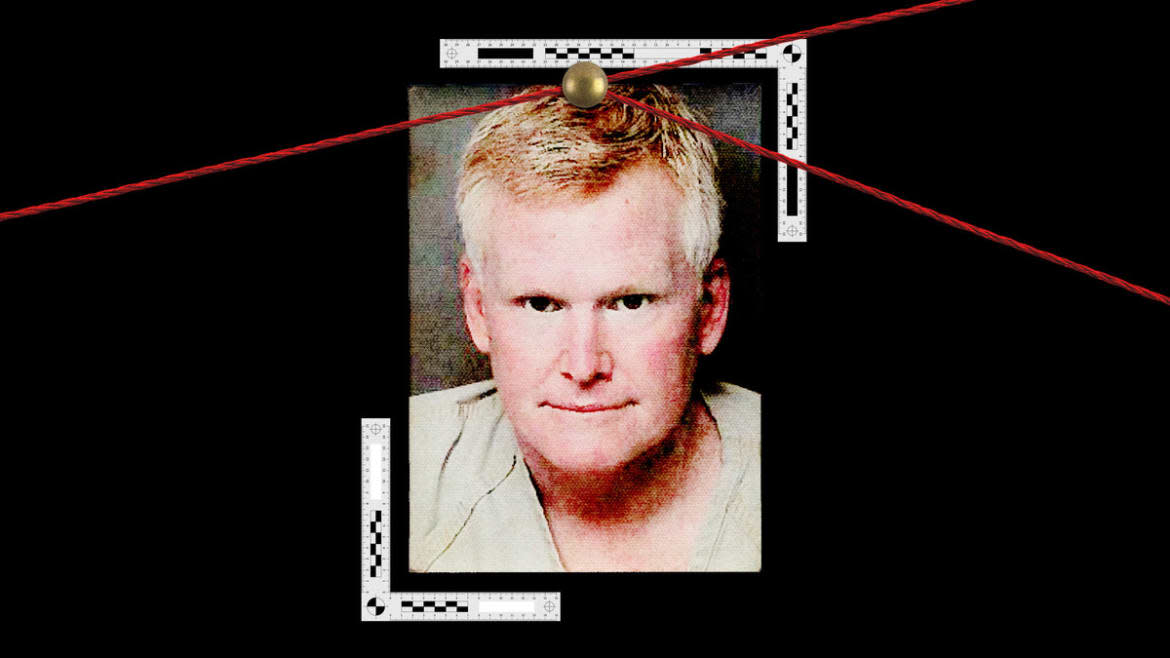Murdaugh Family Murder Trial Is Already a ‘Bloody’ Fight

As the long-awaited double homicide trial against former South Carolina lawyer Alex Murdaugh began on Monday, his defense lawyers were making one final plea to the judge: Don’t let the prosecution talk about “blood spatter” in this case.
The defense motion, filed just before the 54-year-old disgraced attorney entered the Colleton County courthouse for the first day of jury selection, seeks to bar Orangeburg County Chief Deputy Kenneth Lee Kinsey from discussing “blood spatter on a white T-shirt Murdaugh wore the night his wife and son were murdered” in June 2021.
Murdaugh’s team argues that Kinsey should not be allowed to testify because he admitted in his report that he could not render an opinion on whether there was blood spatter on the shirt after the garment was allegedly ruined by forensic tests. Hours later, the defense filed another motion reiterating their previous request to prohibit testimony from Tom Bevel, a former Oklahoma police officer who operates a self-described forensic education company who concluded that “100+ stains are consistent with spatter on the front of the T-shirt.”
The motion added that if their request to exclude Bevel's testimony was denied, they would like an evidentiary hearing on the blood spatter evidence before trial. Murdaugh’s team was scathing in its criticism, previously arguing that Bevel’s opinion of Murdaugh’s shirt is based on an “at-home ‘science fair’ experiment” conducted in his “garage or kitchen or wherever.”
Alex Murdaugh’s Lawyers Allege Critical Evidence Was ‘Destroyed’
That Murdaugh’s lawyers are seeking to exclude testimony from two experts slated to speak about what seems to be one of the prosecution’s most important pieces of physical evidence is not surprising—especially since several legal experts told The Daily Beast that blood spatter analysis is seen by many as a subjective science.
“I think when it comes to this type of evidence it's more opinion than science but it uses scientific principles, and it has precedence, therefore, it will be admitted,” Jose Baez, a defense attorney who has represented Harvey Weinstein and Casey Anthony, said. “If the prosecution is entering in faulty opinions, it's more a matter of junk opinion than junk science.”
Prosecutors allege that Murdaugh murdered his wife, Maggie, and his son, Paul, in June 2021 in a deliberate attempt to turn the spotlight away from a years-long scheme to swindle millions from his clients and law firm to keep his “fantasy persona of wealth, respectability, and prominence alive.” In addition to the murder case, Murdaugh separately faces dozens of financial charges and allegations that he tried to stage his own murder in a twisted insurance scam.

Alex Murdaugh, left, sits in the Colleton County Courthouse with lawyers Dick Harpootlian and Jim Griffin in a December hearing.
The Monday motion also included several attachments that provided detailed information about how Maggie and Paul Murdaugh died. Reports by the state’s crime scene expert concluded that 22-year-old Paul was standing in the feed room of the dog kennels when he was shot in the chest and head, stumbling forward before he was shot a second time in the head. His 52-year-old mother, however, suffered five bullet gunshot wounds, including a fatal gunshot wound to the head.
Based on bullet casing patterns and other analyses, the crime scene expert concluded that Maggie and the shooter were moving when the shots were fired. The expert added that Maggie was shot six times.
In a third filing on Monday, Murdaugh's defense team asked the judge to suppress “firearms identification evidence” and testimony from expert Paul Greer. After testing several guns that were seized from Murdaugh's property after the murder, Greer indicated that Maggie may have been killed with a .300 Blackout rifle, the motion states.
The defense, however, argued that his analysis should not be presented to the jury because his assertions that tool marks from the cartridges matched the suspected rifle are not scientifically valid. If their request to exclude Greer is denied, the motion asked for an evidentiary hearing—later arguing that firearms identification analysis is also a subjective science.
Murdaugh has pleaded not guilty to two counts of murder and two counts of possession of a weapon during the commission of a violent crime in connection with the double homicide. His trial kicked off on Monday, where dozens of reporters descended on South Carolina for a trial that is expected to last several weeks.
The defense has long maintained his innocence, claiming prosecutors do not have the evidence to prove Murdaugh—who claims he was with his ailing father at the time–killed his wife and son.
These Murdaugh Family Members May Testify at His Murder Trial
In an attempt to poke holes in the prosecution’s case, defense attorneys have been pleading with Judge Clifton Newman for months to eliminate blood spatter analysis from the trial, accusing the prosecution of destroying evidence “in bad faith,” leaking information to the press to change public perception of the case, and collecting conflicting results in the T-shirt analysis.
The latest motion states that Kinsey concluded that he could not render an opinion on whether the bloodstains “were consistent with back spatter from a gunshot” after reviewing Bevel’s report and analysis. The South Carolina Enforcement Division’s HemaTrace testing results, the motion added, “confirmed the stains are not human blood.”
“SLED retained Mr. Bevel to opine that the T-shirt is stained with high-velocity blood spatter that could only come from being in proximity with them at the time of their murders,” the motion reads. “It did so even though the State knew on August 10, 2021—almost six weeks before first reaching out to Mr. Bevel on September 21st—that confirmatory blood test results were definitively negative for human blood in all areas of the shirt where purported spatter is present.”
The defense added that the shirt was allegedly destroyed in July 2021 after an “unnecessary application of an oxidizing chemical stain” used to detect bloodstains. The process turned the shirt a purplish blue, therefore making it impossible for the defense to have their own experts examine the evidence.
Defense attorneys argue that blood was transferred to Murdaugh’s hands and clothing that night as he “frantically checked [his family] for signs of life” after finding them at the crime scene. In a previous filing, the defense even noted that Kinsey was “unwilling to say that the T-shirt has any blood spatter.”
“Without an opinion on whether the stains are ‘blood stains’ or whether the stains are ‘consistent with back spatter from a gunshot,’ any expert opinion testimony he would offer regarding the stains would not assist the trier of fact; and therefore, such expert opinion should be excluded because it will unfairly confuse and mislead the jury,” the motion states.
Motive Revealed in Alex Murdaugh’s Alleged Murder of Wife and Son
Michel Huff, a California criminal defense attorney and former police officer who is not involved in the Murdaugh case, said that over his career he has found that “blood spatter evidence’s efficacy is debatable.”
“Because blood behaves according to certain scientific principles, trained bloodstain pattern analysts can examine the blood evidence left behind and draw conclusions as to how the blood may have been shed,” Huff told The Daily Beast. “From what may appear to be a random distribution of bloodstains at a crime scene, analysts can categorize the stains by gathering information from spatter patterns, transfers, voids, and other marks that assist investigators in recreating the sequence of events that occurred after bloodshed.”
“This form of physical evidence requires the analyst to recognize and interpret patterns to determine how those patterns were created,” he added. “Importantly, blood pattern analysis does have limitations including the misinterpretation or over the interpretation of blood patterns.”
That said, Huff added that the defense’s argument that Kinsley should not testify because he could not render an opinion on whether the bloodstains “were consistent with back spatter from a gunshot” does not mean that Murdaugh is innocent.
“This is far from conclusive or direct evidence of Alex Murdaugh’s guilt,” he added.
Baez said it is not a surprise the prosecution wants to use blood pattern analysis since the practice “has been around for years and used in some of the most high-profile trials of our time.”
“It will be an uphill battle for the defense as to admissibility, but like all forensic science, it will depend on the quality of the expert,” he said. “All experts are not created equal. Some miss things, some stretch the truth, but when applied correctly, blood pattern evidence utilizes established mathematics and physics.”
Get the Daily Beast's biggest scoops and scandals delivered right to your inbox. Sign up now.
Stay informed and gain unlimited access to the Daily Beast's unmatched reporting. Subscribe now.

